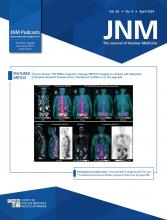Abstract
Background: The European Association of Urology (EAU) Prostate Cancer Guidelines Panel recommends risk groups for biochemically recurrent prostate cancer (BCR) to identify men at high risk of progression or metastatic disease. Recent United States Food and Drug Administration approval for 68Ga-PSMA-11 and growing availability of PSMA-directed PET imaging (PSMA PET) will impact disease localization in majority of men with BCR. We determined the rates of local and metastatic disease in recurrent and persistent prostate cancer stratified by EAU BCR risk groups and biochemical persistence (BCP). Patients and Methods: Patients with BCR/BCP were enrolled under the same prospective clinical trial protocol conducted at three sites (n = 1777, 91%; UCLA n = 662, NCT02940262; UCSF n = 508, NCT03353740; Michigan, n = 607, NCT03396874); 183 patients with BCP from Universities of Essen, Bologna, and Munich (TUM) were included retrospectively. Patients with BCR had to have sufficient data to determine EAU risk score. Multivariate, binomial logistic regression models were applied to assess independent predictors of M1 disease. Results: A total of 1960 patients were included. Post-RP EAU BCR low risk, EAU BCR high risk, and BCP groups yield distant metastatic (M1) detection in 43/176 (24%), 342/931 (37%), and 154/386 (40%) of patients. For post-RT EAU BCR low risk and EAU BCR high risk groups, M1 detection rate was 113/309 (37%) and 110/158 (70%), respectively. BCP, high risk BCR and higher levels of serum PSA were significantly associated with PSMA PET M1 disease in multivariate regression analysis. PSMA-PET revealed no disease in 25% and locoregional only disease in 33% of patients with post-RP or post-RT EAU BCR high risk. Conclusion: Our findings support the new EAU classification; EAU BCR high-risk groups have higher rates of metastatic disease on PSMA PET than the low-risk groups. Discordant subgroups, including metastatic disease in low risk and no disease in high risk patients warrant inclusion of PSMA PET stage to refine risk assessment.
- Molecular Imaging
- Oncology: GU
- PET
- PET/CT
- PET/MRI
- EAU
- PSMA
- prostate cancer
- prostate specific membrane antigen
- risk score
Footnotes
Immediate Open Access: Creative Commons Attribution 4.0 International License (CC BY) allows users to share and adapt with attribution, excluding materials credited to previous publications. License: https://creativecommons.org/licenses/by/4.0/. Details: https://jnm.snmjournals.org/page/permissions.
- Copyright © 2021 by the Society of Nuclear Medicine and Molecular Imaging, Inc.







